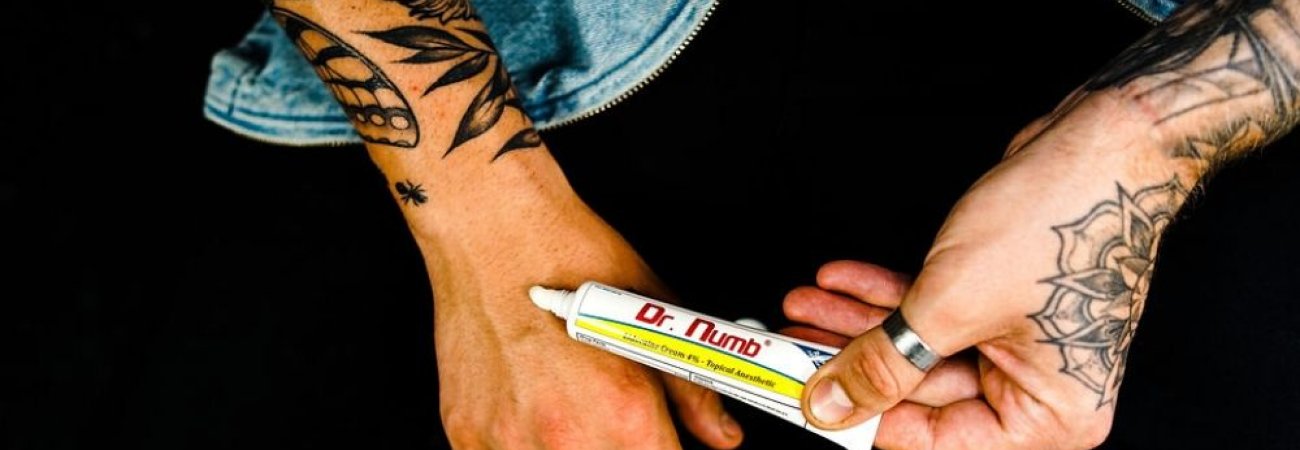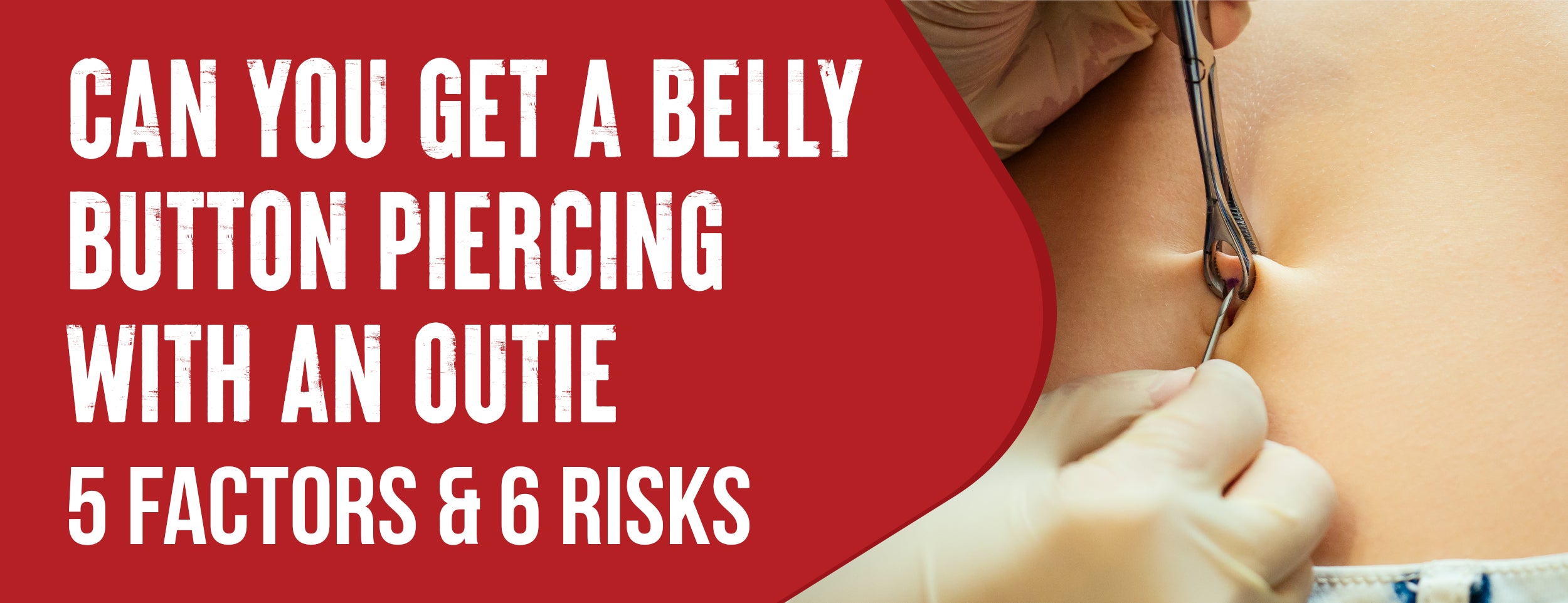A lip piercing with an infection may cause redness, swelling, pain, pus, fever, or nausea. Unlike other piercings, lip piercings take longer to heal. To prevent further complications, seek medical attention promptly if you experience these symptoms.
Most lip piercings heal between 6 and 8 weeks, but Dahlia bites, Monroe piercings, and Medusa piercings can take 3 months or more. Your lip piercing healing process depends on your diligence and whether you encounter any problems.
In this article, we will explain the signs of lip piercing recovery and infections caused by lip piercings and how to recognize the symptoms and take care of them.
How Long Does It Take A Lip Piercing To Heal: 6 Signs of Recovery

When you get a lip piercing, the healing process is an essential part of the journey. It helps to know what to expect so everything is going smoothly. Here's a week-by-week breakdown of what you might experience:
Week 1: Initial Reactions
- During the first week after getting your lip piercing, you may notice some common symptoms.
- Mild swelling and redness are normal reactions. Your body is responding to a fresh wound and working to heal it.
- Soreness is also typical during this week. The area around your piercing is sensitive and adjusts to the jewelry.
- You might see minimal amounts of bleeding. This is nothing to worry about unless it persists beyond the first few days.
Week 2: Gradual Improvement
- By the second week, the initial swelling and redness should subside.
- Any pain you felt should lessen significantly, and bleeding should have stopped.
- At this stage, the piercing site might still be sensitive, but overall discomfort should decrease.

Week 3: Signs of Healing
- In the third week, the swelling should have disappeared almost entirely.
- You may notice a clear or whitish fluid around your piercing. This is lymph fluid, a natural part of the healing process.
- The lymph fluid might dry and form small crust-like formations around your piercing, often called crusties.
Weeks 4-6: Continued Healing
- From the fourth to the sixth week, the healing process continues.
- Your piercing may look healed entirely from the outside, but don't be fooled.
- It's essential to continue your aftercare routine as internal healing is ongoing.
- You might still notice lymph fluid and crusties around the piercing site. This is a sign that your body is still healing the wound.
Lymph Fluids and Crusties
It's essential to differentiate between lymph fluid and pus. Lymph fluid, which can form crusties, is a positive sign of healing. It shows that your body delivers white blood cells to the wound to speed healing. Pus can be a sign of infection.
Potential Complications To Be Addressed
Any symptoms of infection, such as persistent redness, swelling, or a foul smell, it's essential to seek medical attention. Understanding the healing process can help you spot any issues early and get the treatment.
Lip Piercing Infections Spotting the Symptoms and Aftercare Strategies

A lip piercing can be a fun way to express yourself. However, it's crucial to understand that piercings are open wounds that can get infected if not properly cared for. This section of our blog post will help you identify infection symptoms and discuss effective aftercare strategies.
Identifying Infection Symptoms
The first thing to note is that some redness, swelling, warmth, and pain are expected after a lip piercing. These symptoms should decrease. If they persist or worsen, you must watch out for potential infection.
One way to differentiate between a normal healing process and a disease is by checking the discharge from your piercing. Lymph, a clear or slightly yellowish fluid, is a normal part of the healing process. Plus, often thick and green or yellow, could be a sign of infection.
If you suspect an infection, don't panic. Instead, take prompt action and contact your professional piercer for guidance. They'll be able to advise you on the next steps and whether you need to seek medical attention.
Effective Aftercare Strategies
The right aftercare prevents infections and ensures your lip piercing heals well. One helpful strategy is incorporating tea tree oil into your cleaning routine. The antiseptic properties of tea tree oil kill bacteria and promote healing. However, it should be diluted with a carrier oil, such as jojoba or coconut oil, to prevent skin irritation.
Another strategy is using an antiseptic mouthwash. This can help keep the inside of your piercing clean. However, use it sparingly, as overuse can disrupt your mouth's natural flora and slow the healing process.

Addressing Underlying Causes
If your lip piercing swelling is excessively severe or persistent, exploring potential underlying causes is crucial. One common cause is an infection, which we discussed earlier. Another cause is an allergic reaction to the jewelry material. Many people are allergic to nickel, a common component in cheap jewelry.
If you suspect your jewelry might cause a problem, seek professional advice for jewelry adjustments. They might recommend switching to hypoallergenic materials like titanium or bioplast.
Notorious Red Piercing Bump: Hypergranulation and Inflammation
One common issue many people with piercings encounter is the infamous red piercing bump. This section will help you distinguish between harmless bumps and potentially problematic ones.
Hypergranulation and Inflammation
Hypergranulation refers to the formation of excess tissue during the healing process, often resulting in a red bow around the piercing. Inflammation is your body's response to injury or infection.
If you notice a red bump forming around your lip piercing, it might be because of tight jewelry. When jewelry is too tight, it can cause pressure and lead to hypergranulation or inflammation. If you suspect this is the case, seek professional help for jewelry adjustments.
Dealing with Flesh-Colored Bumps
Flesh-colored bumps are typically harmless and part of the natural healing process. They're usually because of inflammation, which is your body's way of protecting the wound and promoting healing.
As discussed earlier, one way to encourage the resolution of these bumps is through diligent aftercare. Another strategy is using a piercing disc, a small plastic device that applies gentle pressure to the bump to help it flatten out.
Lip Piercing Scars: Types, Causes, and Prevention

Scarring is a potential risk with any modification, including lip piercings. This section will discuss the scars you might encounter, their causes, and how to minimize the risk of scarring.
A keloid is an expanded scar that extends beyond the original site. Hypertrophic scars, like keloids, are also raised but don't grow beyond the wound site. Atrophic scars are indented or sunken.
Your likelihood of developing a specific type of scar often depends on your genetic predisposition. For instance, darker skin tones are more prone to developing keloids.
Medical interventions are frequently necessary for keloids, hypertrophic and atrophic scars can often be treated with home remedies.
Minimizing Scarring Risks
Choosing a trusted professional piercer reduces scarring risk. They have the skills and experience to perform the piercing correctly and advise you on proper aftercare.
Opting for high-quality, biocompatible jewelry can also help prevent allergic reactions, which can lead to scarring. Titanium and bioplast are excellent options because of their hypoallergenic properties.

Conclusion
A lip piercing is self-expression that can be both exciting and nerve-wracking. While some people may experience discomfort while healing, others may find it relatively painless. It's important to remember that everyone's experience will be different, and caring for the piercing is crucial to ensure proper healing.
Maintaining good hygiene habits and following the aftercare instructions provided by your piercer can help prevent infections and other complications. You can enjoy the unique look and feel of a healed lip piercing with patience and care.








![The Recovery Time and Stages of Nipple Piercings [Best Practices]](http://drnumb.com/cdn/shop/articles/How_Long_Do_Nipple_Piercings_Take_To_Heal__3_Stages_Explained.jpg?v=1714373243)




